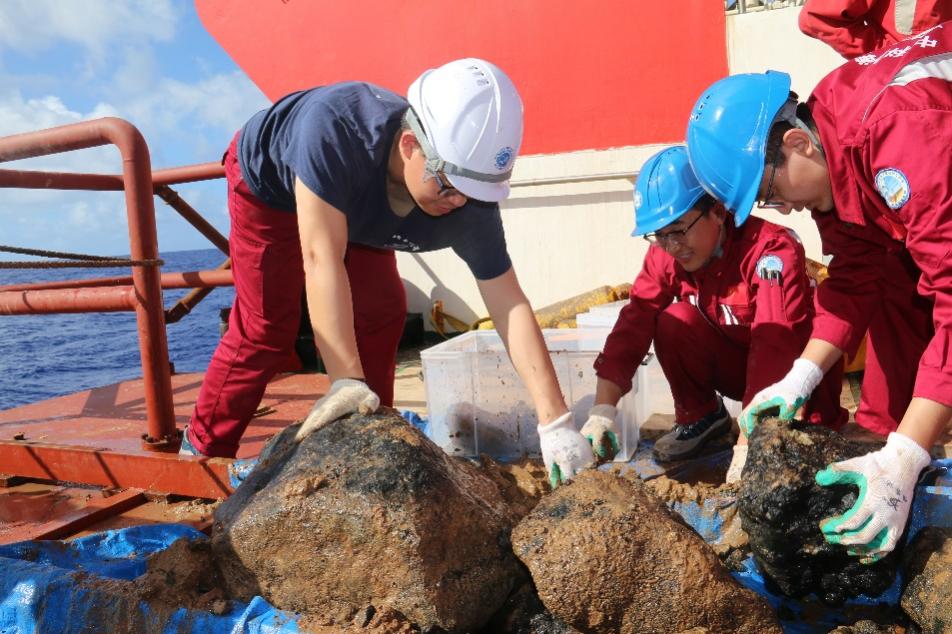(Text by ZHANG Guoliang, zhangguoliang@qdio.ac.cn)

Guoliang was working on the ship of R/V Kexue located above the Caroline plateau in the western Pacific Ocean. Credit: Institute of Oceanology, Chinese Academy of Sciences
I'm fascinated by the seafloor volcanism although it is covered by the global deep sea water. As an igneous petrologist and geochemist, it is exciting to feel the power of the deep Earth interior and the investigate interactions between the Earth's interior and its outer spheres.
Seafloor volcanism brings a large amount of materials, including CO2, to the Earth's surface, and the seafloor volcanic rocks are good candidate for investigation of how the deep Earth works and its compositional variability. Volcanism activity through the geologic history also played an important role in affecting the habitable environment.
In this photogragh, I was on the ship of R/V Kexue located above the Caroline plateau in the western Pacific Ocean. The large rock pieces were recovered from the seafloor by TV grab, and they are products of giant volcanism of the Caroline plateau. Work on these volcanic rocks includes measurement of mineral and bulk-rock major and trace elements, volatiles, and radiogenic isotope compositions. Suitable minerals will also be selected to measure the extrusion ages by radiometric age-dating. In this way, we can know the information on their age, magma source compositions and thermal state and depth of magma origin and so on.
The main goal of my work is to reveal the nature of the Earth's deep depths, and how interactions of Earth's interior with the outer spheres influence mutual compositional evolution. Although this is not an easy task and is challenging, but it helps to understand the working mode of the deep Earth and its relationship with the Earth's habitable environment.
(Editor: ZHANG Yiyi)

